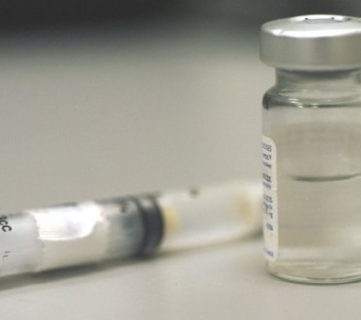
Vaccines – Past, Present, and Future
Edward Jenner, known as “the father of immunology,” developed the first vaccine (against smallpox) in 1796. Jenner noticed that individuals who had become infected with cowpox seemed to show resistance to becoming infected with smallpox. To test this theory, Jenner inoculated an 8-year-old boy using cowpox material from a cowpox blister. He then exposed the boy to smallpox multiple times and the boy never became ill. News of Jenner’s success spread quickly and over the next 150 years, the smallpox vaccine and vaccination process was perfected. While smallpox became rare rapidly in developed countries, in the developing world it still raged in the 1960’s. In 1967, the World Health Organization (WHO) made eradication a main priority and instituted a process of wide scale vaccinations and outbreak containment. In 1977, the last wild smallpox case was reported in Somalia and in 1980 smallpox was declared officially eradicated.
After Jenner’s discovery there were several other pioneers who made significant contributions to vaccine development. Louis Pasteur, in addition to his significant work in food safety, developed the rabies vaccine in 1885. Jonas Salk developed the polio vaccine in the 1950’s and subsequently polio was declared eliminated from the Americas in 1994. Maurice Hilleman developed over 40 vaccines between the 1940 and 2000, including measles, mumps, and hepatitis B. Some believe that Hilleman has saved more lives than any other single person. To say that vaccines have made a huge impact on our health and wellness is an understatement. According to the Biotechnology Industry Organization, “In the U.S., the recommended immunization series prevents approximately 33,000 deaths each year.” Today there are vaccines for more than 20 infectious diseases and receiving vaccinations has become a childhood rite of passage in the developed world. Vaccines protect all of us, but in particular their greatest protection is delivered to the most vulnerable in our society – children and the elderly. Since 2000, meningococcal, rotavirus, and hepatitis A vaccines have been added to the recommended vaccinations list for children. Every year a new influenza vaccine is created and is recommended for all, but especially for children and the elderly who are most at risk from dying of seasonal flu. One only has to look at the most recent outbreak of pertussis, or “whooping cough,” in California to see the importance of vaccination. According to the Centers for Disease Control (CDC), the reported cases of pertussis were up 418% from 2009 to 2010 and 89% of these cases were in infants less than six months old. There were 5 deaths, all in infants less than 2 months, who are too young to be fully vaccinated. This outbreak increased the importance of having family members and caregivers of infants be fully vaccinated to protect infants from these diseases before vaccines can.
Even with all the new vaccines that have been developed and the progress that has been made since Jenner’s discovery, there is still much work to be done. Researchers are actively searching for vaccines against many more diseases, including HIV, malaria, and a universal influenza vaccine that would be effective against any strain of flu. Researchers are also looking at ways to deliver vaccines to the developing world where high cost and difficult delivery scenarios prevent vaccines from being available on a widespread basis. As a result, researchers are examining cost reduction strategies and new methods for vaccine delivery that would eliminate the need for vaccines to be refrigerated and delivered through injection, i.e., oral vaccines.
Manufacturing of vaccines and utilization of modern technology, like cell culture-based vaccine production have also improved. Cell culture-based vaccine manufacturing offers several advantages, but the most significant is the speed from development to delivery. Cell culture-based production allows manufacturers to increase production quickly so that millions of doses can be made weekly. For example, full-scale cell culture-based vaccine production facilities could manufacture up to 150 million doses of a pandemic influenza vaccine in six months.
Despite smallpox’s eradication in 1980, there is significant concern that smallpox could be used as a bioterrorist weapon. To this end, the Food and Drug Administration (FDA) approved Acambis’ ACAM2000 smallpox vaccine in 2007. The new Acambis smallpox vaccine is grown in cell culture and is provided to the U.S. Military who previously used Wyeth’s freeze dried Dryvax smallpox vaccine, which was produced on the skin of calves in the 1970’s and stockpiled. Due to its method of production, Acambis’ smallpox vaccine provides a purer vaccine with less risk of causing complications. In addition, by producing the smallpox vaccine in cell culture, it allow for rapid, large-scale production if necessary in response to a bioterrorist attack. According to Acambis, they have provided 192.5 million doses to the CDC for the strategic national. Cell culture-based production is clearly the manufacturing choice for the future.
So where do vaccines go from here? There is significant research occurring in several areas and it will be interesting to see which new diseases have vaccinations over the next 20 years, what new delivery techniques are developed, and what manufacturing technologies are perfected.